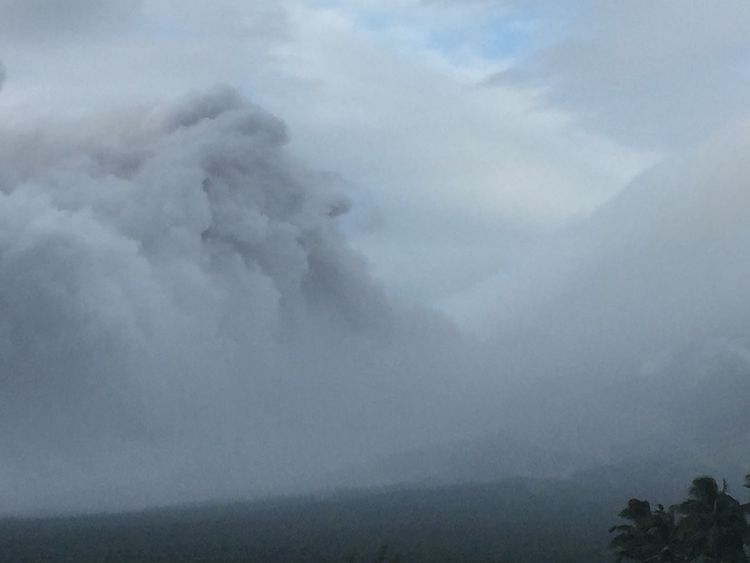AS A MATTER OF FACT
By Sara Soliven De Guzman
(The Philippine Star) | Updated January 22, 2018 - 12:00am
William Shakespeare once wrote, “The very substance of the ambitious is merely the shadow of a dream.” We have been dreaming for a better Philippines. Is this being too ambitious?
For decades now we have longed for change. We want it so badly, we are ready to go through a thin livewire, perhaps get electrocuted along the way and burned beyond recognition. Of course, there is always hope even after a very painful surgical procedure and horrifying experience.
This is what’s happening to our country. We have too many ambitious politicians, legislators alike who think they know everything, who think they can solve our problems but in reality are only saving their own.
Are we just ‘dreamers’? Or are we shapers? Are we capable of creating change? Or are we insane? I guess, due to desperation we can be all. Will our bahala na (come what may) mentality rule over us?
President Duterte’s determination to change the present form of government to Federalism definitely comes out from his own 22-year experience as a mayor and a public servant in Mindanao. His frustration may be that of many local and national officials around the country because the central command center has always been in Metro Manila. Not only is it too far to reach, it may also be too partisan, too preferential or too bias.
The shinning seas in this archipelagic nation may be a deterrent in communication, production and distribution owing it to the poor and slow development of the maritime industry not to mention the problematic land and air traffic. But more than these hindrances, the problem lies in the degree of unity we have as a people. The Filipinos have not accepted many things about our national identity – the name of the country, the national language, our national heroes, etc. etc. We tend to be more loyal to our sub-cultures within the nation.
We are still a nation in search of our identity as we keep to our ancestral domains, our regions and our provinces, believing that each islet can stand independently. We all want to be the rajahs and the datus; the kapitans and the gobernadorcillos; the leading chieftains in our individual kingdoms. Haven’t you noticed how each province is almost owned by a long reigning political dynasty?
The idea of Federalism for the Philippines to the ambitious politicians is like a carrot stick just waiting for the rabbits to hop toward it. And boy! Are there many rabbits out there! This could be the opportunity of their lifetime. Why should they miss this chance?
The legislators debating over the issue last week seemed to believe they are experts in the field of Federalism. Don’t be fooled by them. How can they be authorities in this subject matter? They must admit their lack of expertise and start talking to the real McCoys out there.
First, we must identify our needs in relation to the elements involved for such a change. So far, no one has presented such information. Second, we have to evaluate the professional consultants needed to research and compile a study. They cannot be merely volunteers. They must not only be academically knowledgeable but also experienced in applied federal government specializing in organization and framework structures. If they are not available in the country, then we seek the help of other Federal countries like France, Germany, Australia, Denmark and others.
When it comes to productive government change, I am sure these countries are more than willing to help and assist for the betterment of our nation. We can also talk to Filipinos who have experienced living and working in a country with a federal system. Just imagine an ex-Chief of Justice stating that Federalism will make the poor poorer. This is nonsense. Does he know what he is talking about? And we blindly and foolishly believe him. These are the type of so-called experts we have here. Sanamagan!
We need to be more professional, we need to elevate our way of thinking, we need to evolve. Each member of Congress must responsibly plan and implement the wishes of the people and their constituents. This is not a matter of ambition but must be a genuine contribution to what is best for the people of the Philippines.
Over the past one hundred years of our constitutional history, we have released multiple versions of the Constitution. From the pre-Spanish laws, the Spanish and American versions, the Marcos dictatorial regime to President Corazon Aquino’s democracy. To date, we haven’t quite gotten the right formula for running a country. Susmariosep!
We lack the ability to progressively develop and maintain our Constitution as a proactive government mechanism. This includes the full organization administrative framework of government and the needed legislation in managing and maintaining government administration, the judiciary both criminal and civil legislation and the proper organization of the different branches of government. We cannot perform as a government beyond the legal implications of any desired changes to better government practices.
The Constitution of the Philippines states that, the local governments “shall enjoy local autonomy”, and in which the Philippine president exercises “general supervision”. Congress enacted the Local Government Code of the Philippines in 1991 to “provide for a more responsive and accountable local government structure instituted through a system of decentralization with effective mechanisms of recall, initiative, and referendum, allocate among the different local government units their powers, responsibilities, and resources, and provide for the qualifications, election, appointment and removal, term, salaries, powers and functions and duties of local officials, and all other matters relating to the organization and operation of local units.”
Empowering the local government in this way without visualizing the conniving nature of our Filipino culture and where politicians target long term power and control resulted in corruption, creation of family dynasties and an ineffective and inefficient government service. The practicality of the Local Government Code is suited to a Federal Regional State Government governance operation but not for each local government. It is ideal as the initial basis to be developed under a Federal form of government. It is meant as the basis in guiding satellite cities and municipalities to a uniform way of administrative governance. If applied correctly, the Regional State office needs the management portion of the local municipal office regarding the resources made available by the national government, like Health, Education, Election Coordination and inspectors, Energy Management, Social welfare and others.
The Local Government Code was developed to address deficiencies in local government. But as we are a nation not known for proactive development of systems, we simply hide behind the foolish legal arguments. So this is why we have ineffective government machinery. Nothing is corrected or reviewed properly. The Local Government Code was rushed and wrongly applied. It can still be reviewed to become more efficient and can be the segue to the federal system of government.
The President must carefully plan his moves. He can delay the decision to change the form of government into federalism for a year. Then, commission top universities and colleges to submit a thoroughly researched paper taken from local and international sources with realistic findings in 12 months. After the presentation of the paper to Congress, then maybe both Houses can proceed with the process of changing the form of government. Probably this can be a more practical and non-political approach to address the federalism issue. Let’s not get lost in translation.





